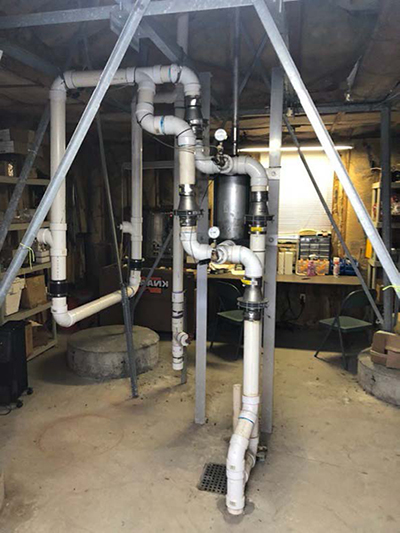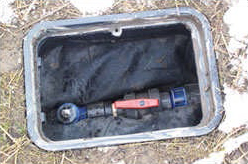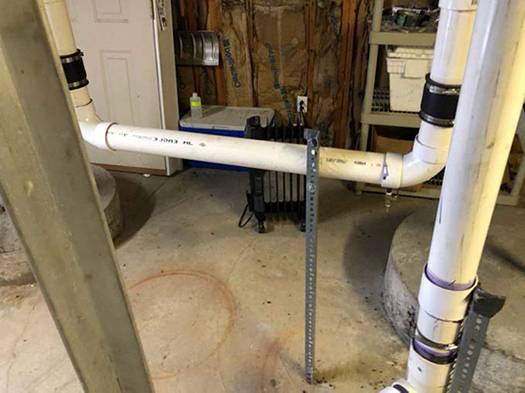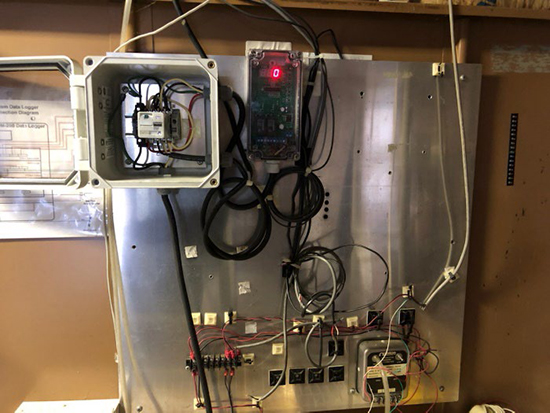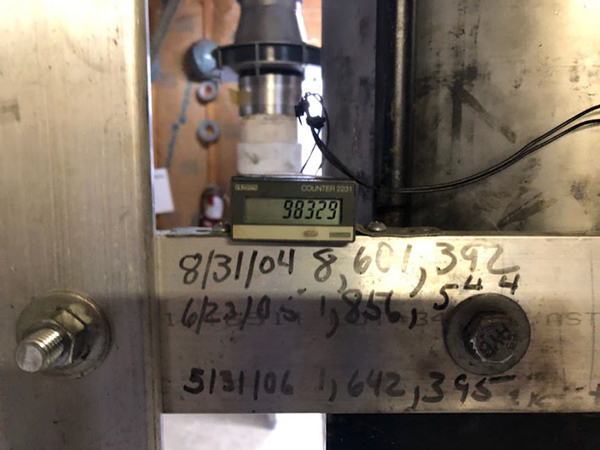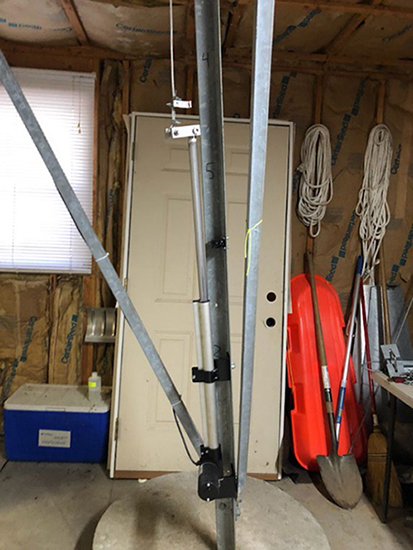Green Remediation Focus
Former Ferdula Landfill
Frankfort, New York
State Superfund
Cleanup Objectives: Remove semi-volatile and volatile organic compounds (VOCs ) from soil serving as a contaminant source within a 2-acre closed and capped landfill situated approximately 100 feet above the Mohawk River valley, adjacent to the Old Erie Canal. Various industrial wastes such as solvents, lacquers, wood finishes, oil and paint thinners used in nearby gun manufacturing processes were disposed at the site until 1975. Ongoing remedial actions involve maintaining an upgradient groundwater diversion system, a leachate collection system, and a soil vapor extraction (SVE) system connected to the landfill gas venting system.
Green Remediation Strategy: The strategy focuses on best management practices applying to the SVE system, such as:
- Use onsite renewable energy rather than grid electricity derived from non-renewable resources to operate remediation equipment.
- Operate energy-demanding remediation equipment in a pulsed mode if continuous operation is not required.
- Optimize operation of remediation technologies on a periodic basis.
- Automate mechanical and electronic equipment to minimize the need for in-person monitoring and provide resilience to adverse weather conditions.
- Minimize local ecosystem disturbance associated with the use of noisy equipment.
Results:
- Avoiding electricity consumption and air emissions associated with grid electricity generation by using an onsite windmill to extract vapor-phase VOCs from the subsurface. The windmill's 12-foot blades reciprocate a single 10-inch air cylinder fitted with check valves that enable each intake stroke to draw a vacuum from a network of gas vents on the landfill cap. The wind-driven system generates about 85 cubic feet of vacuum capacity for each mile of wind speed per hour and operates at wind speeds of 3 to 20 miles per hour (mph).
- Extracting the soil vapor by way of venting frequencies and speeds that are inherent to naturally variable wind speeds driving the windmill, which results in a pulsed effect. In venting operations, a pulsed mode is typically more effective than a continuous mode.
- Increased operating efficiency of the windmill during low wind (less than 5 mph) by 50 to 90 percent by replacing the original steel blades with aluminum blades and the original bronze bearings with steel roller bearings. The modifications reduced rotating mass and bearing friction, resulting in a 25 percent increase in the rate of VOC removal.
- Avoiding high wind-related windmill damage and associated windmill repair by integrating an automatic braking system. The system furls the windmill and applies a brake to suspend operations when wind speeds exceed 20 mph. By monitoring wind speeds every 30 minutes, the braking system also automatically unfurls the windmill when wind speeds subsequently decrease to less than 20 mph.
- Avoiding the noise disturbance typically associated with an SVE system driven by air blowers instead of natural wind forces.
- Maintaining aesthetics of the local farming community through use of a minimally sized auxiliary building and a traditional wind power system that blend with surrounding landscapes.
- Increased the rate of vapor extraction by installing six additional vents after the first two years of SVE operation, which originally relied on a network of three vents.
- Reduced total VOC concentrations in soil gas more than 95 percent over an 18-year period, from 2002 through 2020. By 2010, approximately 1,500 pounds of total VOC mass were removed by granular activated carbon (GAC) canisters through which the extracted air flowed before emission at the top of a 40-foot tower. The GAC canisters were taken out of service in 2011 due to New York Department of Environmental Conservation determination that contaminant concentrations in soil vapor vented from the landfill had significantly decreased and the untreated landfill gas could be discharged without adverse effects on air quality or surrounding properties. To ensure that reinstallation of GAC canisters is not required, monitoring of emissions continues.
- Producing an average SVE flowrate of 9,296 cubic feet per day, with an average contaminant removal rate estimated at 3.63 to 59.35 pounds per year.
- Recovered $14,000 in capital/installation costs for the windmill equipment and installation within one year due to avoided electricity costs when compared to implementing a conventional air blower system. Operation and maintenance (O&M) costs for the full wind-driven SVE system average about $500 each year, in contrast to a potential $75,000 per year average O&M cost for a conventional SVE system. A potential average O&M cost savings of $1,862,500 has been obtained over a 25-year period (1997 through 2022).
Property End Use: Long-term monitoring and maintenance of the landfill cover system.
Point of Contact: Peter Ouderkirk, New York Department of Environmental Conservation
Update: April 2022




